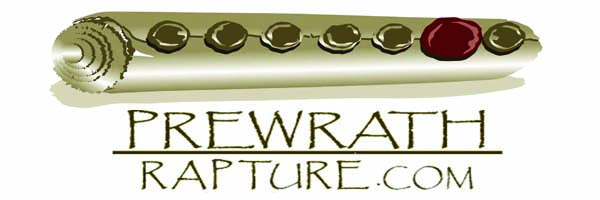Pentecost: The Incomplete Feast
Charles Cooper
(Part I)
As we enter the week of the Jewish celebration of their Passover, we gentiles remain more confused than ever. Untold Christians will allow this week to come and go with scant real appreciation of it. Others will greatly overplay its importance, but see little value in the Lord’s death as being connected with the Jewish Passover. Messianic Jews will blindly attempt to combine the two events and thereby cheapen both.
Unfortunately, so much of what we believe about the Jewish feasts, in terms of our Lord’s relationship to them, is fanciful thinking (it’s eisegesis: reading back into the text things we want to see and not what God intended). The only real point of correspondence between the spring feasts and the death and resurrection of Jesus Christ is the pattern – the temporal parallel. Two events (his death and resurrection) occurred on the precise day of the Jewish month that two Jewish Feasts occur – Passover and Firstfruits.
Christ both died and was buried on Nisan 14 (See John 19:41-42). This is also the exact day the Jews put to death the Passover lamb that would be eaten on Nisan 15. It is so important for you to understand that the Passover meal was eaten on Nisan 15, however, the Passover lamb was killed and prepared (cooked) on Nisan 14. If you do not keep this information straight in your mind, you will never really understand what the Lord Jesus did for us through his death and resurrection.
On the night before the Lord died, (which is the night of Nisan 14 – remember the Jewish night comes before the day), he instituted a new memorial: the Lord’s Supper. It incorporated his blood = wine (the Feast of Passover) and his body = bread (the Feast of Unleavened Bread). Remember, the Jewish Passover is about God’s physical deliverance of the Jewish people from Egyptian bondage, but the Gentile Passover is about the spiritual deliverance of God’s elect (both Jews and Gentiles) from sin’s bondage. Elect Jews celebrate both physical and spiritual deliverance from bondage. Sadly, many try to combine the Jewish Passover and the Gentile Passover into one event. This is done in ignorance and with a complete lack of understanding of the intent of the New Testament. If done correctly, Messianic Jews should celebrate the Passover of the Lord Jesus on the day of Nisan 14 (spiritual deliverance) and the Jewish Passover on the night of Nisan 15 (physical deliverance).
Now this is really, really, really, and one more time for even more emphasis, really important: the first day of Unleavened Bread (which is a week-long celebration) is the 15th of Nisan. The first meal eaten during the week-long celebration of Unleavened Bread is the Passover meal. Again, many New Testament believers read into the New Testament (again, eisegesis) what they want to see instead of understanding God’s original intent. On the first day of Unleavened Bread, the Lord Jesus was in the grave. The first three days of Unleavened Bread saw the Lord Jesus in his tomb. Therefore, the only connection between the Feast of Unleavened Bread and the Lord Jesus is his inclusion of the bread, which equals his body, in the Lord’s Supper. The Feast of Unleavened Bread is the bread element of the Lord’s Supper. Any attempt to force a link between Jesus and the idea of leaven as a representative of sin is completely misguided and should be considered an invention of man’s imagination and eisegesis of the highest order.
On Nisan 17, (which happened to be the first Sunday after Passover during the year of our Lord’s crucifixion, which God set as the day for the celebration of Firstfruits), the Lord rose from the dead and became the first one of the firstfruits of the resurrection. I am personally convinced that the Lord Jesus was not alone, but that Matthew 27:51-53 describes others who were also a part of the firstfruits of the resurrection. The resurrection of Jesus and others represent the firstfruits of the harvest of God’s elect.
The harvest celebration in Israel consisted of two parts: Firstfruits and Pentecost. Firstfruits celebrated the first sheaves of the barley harvest. Fifty days later, Pentecost celebrates the firstfruits of the wheat harvest (Numbers 28:26). The outpouring of the Holy Spirit at Pentecost is a pattern fulfillment in the sense that God grants the blessing of crop production, which the people then celebrate. The Holy Spirit is our guarantee of the future blessings of God (Eph. 1:13-14). Remember this: Firstfruits and Pentecost celebrated the barley and wheat harvests, respectively. The spiritual application of these feasts is still future. Christ, among the firstfruits, has been waved, but the ultimate ingathering of the wheat remains. The Holy Spirit came at Pentecost and began the wheat harvest. We are still engaged in the great wheat harvest, [More about that in the next article].
However, no one will ever convince me that the Jewish people do not have a right to expect their Messiah to fulfill the fifth feast for Israel. Gentiles have hijacked the first feast of Tishri. It is my conviction that the rapture completes what was begun at Pentecost—the great harvest. It has nothing to do with the “so called” feast of trumpets. It is almost universally accepted that the rapture will occur in connection with the Jewish feast of “trumpets.” This is nothing more…and I do mean nothing more than man’s invention to satisfy his own imagination. This is Eisegesis gone wild! The first feast of Tishri is never called “the Feast of Trumpets” in the Bible. The title Rosh Hashanah, which the Jews now call the first feast of Tishri, does not occur in Scripture either in connection with the first feast of Tishri. Even Marvin Rosenthal admits, “This designation was not applied to this feast until at least the second century A.D., more than 1,500 years after the institution of the holiday.”[1] It is man’s invention. The first feast of Tishri has nothing to do with trumpets – whether the first or the last.
[1] Kevin Howard and Marvin Rosenthal, The Feasts of the Lord, (Nashville, Thomas Nelson Publishers 1997), 103.

